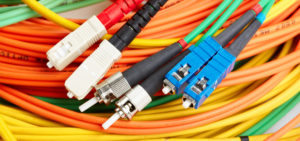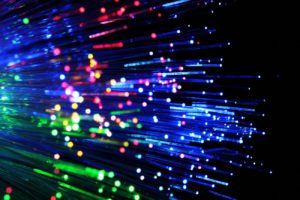We commonly use terms like LSZH and PVC to describe them. These two terms
describe the chemical compounds used in production of the cables. The cables used in LANs, WANs, etc. meet LSZH specification. The IEC 60332-1 governs the Flame Retardant Grade specifications in reference to LSZH cables.
LSZH—Short for low smoke zero halogen, LSZH is a kind of cable built with a jacket material free from halogenic materials (such as chlorine and fluorine), since the toxic nature of these chemicals when burned.
PVC—Polyvinyl chloride (vinyl), a general-purpose plastic jacket material used for cables. Features low in cost and flexible, PVC cable is widely used in applications such as computers, communications and low voltage wiring.
IEC specification

Today virtually all medium and large installations in Europe must meet the IEC specification. Many public authorities are already demanding that new installations must meet IEC 60332-3 which is a more demanding flammability specification for LSZH.
What’s the difference between PVC and LSZH cables
- Physically, PVC and LSZH are very different. PVC patchcords are very soft; LSZH patchcords are more rigid because they contain the flame retardant compound, and they are aesthetically more pleasing.A PVC cable (made of polyvinyl chloride) has a jacket that gives off heavy black smoke, hydrochloric acid, and other toxic gases when it burns. Low Smoke Zero Halogen (LSZH) cable has a flame-resistant jacket that doesn’t emit toxic fumes even if it burns. Comparing with PVC compounds, there is a limited range of
 compound flexibility available for LSZH compounds, so LSZH cable is not recommended for robotic or continuous flex applications.
compound flexibility available for LSZH compounds, so LSZH cable is not recommended for robotic or continuous flex applications. - LSZH cables usually cost more than the equivalent PVC cable, and certain types are less flexible. LSZH cable does have some restrictions. According to CENELEC standards EN50167, 50168, 50169, screened cables must be halogen free. However, no similar regulation yet applies to unscreened cables.
- When a PVC cable is set on fire, it emits chemical fumes, acids and other toxic gases, which are both corrosive and harmful to human beings and environments. As for LSZH cable that has a flame-resistant jacket, it doesn’t emit these chemical substances even if it burns or exposed to high sources of heat. And it can reduce the amount and density of the smoke.
 Where do you run the cable?
Where do you run the cable?
Whether you choose a riser (PVC), plenum or LSZH jacket depends on where you’re going to run the cable.
PVC cable is commonly used for horizontal runs from the wiring center, or for vertical runs between the floors—but only if the building features a contained ventilation system running through the duct work.
LSZH cable is used between floors in a building. It has a special flame-retardant coating. Confined spaces with large amounts of cables in close proximity to humans or sensitive electronic equipment, such as submarines and ships.Mass transit, central office facilities and telecommunication applications.
Even though PVC cable still reigns supreme in wire and cable industry, the use of which has decreased over the past years. On the other hand, LSZH cable technology has advanced significantly, In the purchase process, you must buy according to your own needs.



